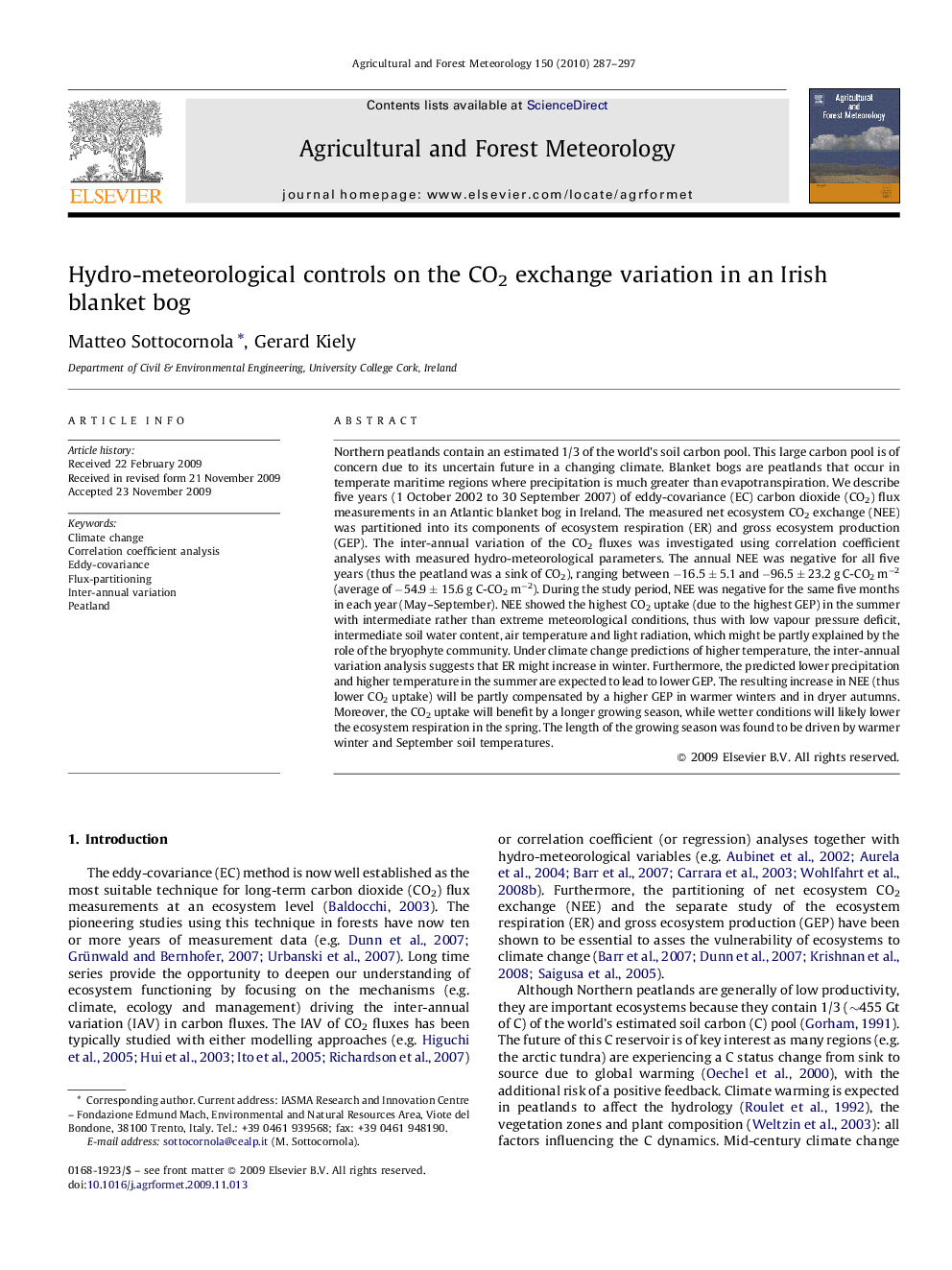| کد مقاله | کد نشریه | سال انتشار | مقاله انگلیسی | نسخه تمام متن |
|---|---|---|---|---|
| 82396 | 158394 | 2010 | 11 صفحه PDF | دانلود رایگان |

Northern peatlands contain an estimated 1/3 of the world's soil carbon pool. This large carbon pool is of concern due to its uncertain future in a changing climate. Blanket bogs are peatlands that occur in temperate maritime regions where precipitation is much greater than evapotranspiration. We describe five years (1 October 2002 to 30 September 2007) of eddy-covariance (EC) carbon dioxide (CO2) flux measurements in an Atlantic blanket bog in Ireland. The measured net ecosystem CO2 exchange (NEE) was partitioned into its components of ecosystem respiration (ER) and gross ecosystem production (GEP). The inter-annual variation of the CO2 fluxes was investigated using correlation coefficient analyses with measured hydro-meteorological parameters. The annual NEE was negative for all five years (thus the peatland was a sink of CO2), ranging between −16.5 ± 5.1 and −96.5 ± 23.2 g C-CO2 m−2 (average of −54.9 ± 15.6 g C-CO2 m−2). During the study period, NEE was negative for the same five months in each year (May–September). NEE showed the highest CO2 uptake (due to the highest GEP) in the summer with intermediate rather than extreme meteorological conditions, thus with low vapour pressure deficit, intermediate soil water content, air temperature and light radiation, which might be partly explained by the role of the bryophyte community. Under climate change predictions of higher temperature, the inter-annual variation analysis suggests that ER might increase in winter. Furthermore, the predicted lower precipitation and higher temperature in the summer are expected to lead to lower GEP. The resulting increase in NEE (thus lower CO2 uptake) will be partly compensated by a higher GEP in warmer winters and in dryer autumns. Moreover, the CO2 uptake will benefit by a longer growing season, while wetter conditions will likely lower the ecosystem respiration in the spring. The length of the growing season was found to be driven by warmer winter and September soil temperatures.
Journal: Agricultural and Forest Meteorology - Volume 150, Issue 2, 15 February 2010, Pages 287–297